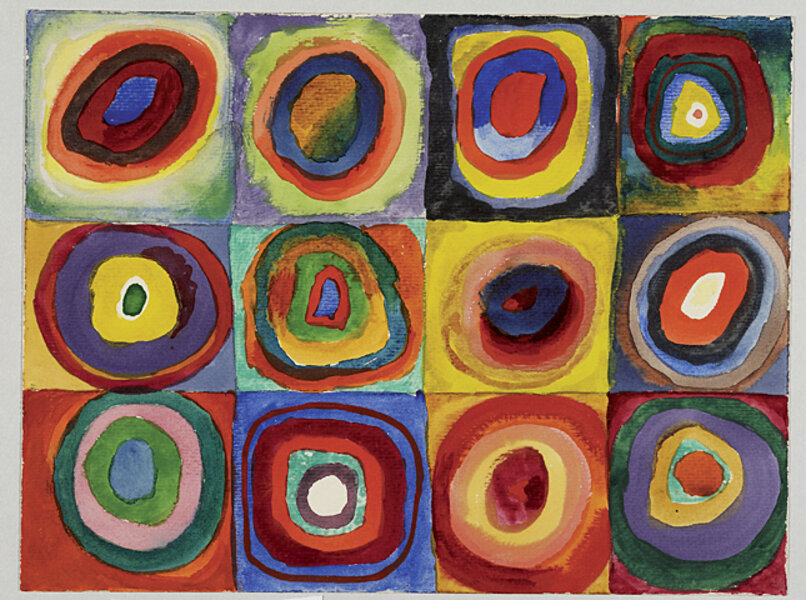Kandinsky spoke 'language of color'
Loading...
For Russian-born Wassily Kandinsky (1866-1944), color, line, and shape were a living language that spoke to his soul. Author of "Concerning the Spiritual in Art" (1911), Kandinsky spent a lifetime tuning up his paintings to make them sing. In pioneering purely abstract art, he changed the course of modern art forever.
On a trip to the Ukraine as a young man, he experienced something of an epiphany surrounded by the vibrantly painted interiors of peasant homes. It was the same thing he felt from seeing the intense color of Moscow churches and sunsets that, he recalled, "like a wild tuba, sets all one's soul vibrating."
When he became a painter at age 30, Kandinsky methodically studied the technical aspects and retinal effects of color and line, experimenting with "the language of color." For him, colors induced emotions. Yellow, he said, was "an intense trumpet blast by its nature springing from the painting." Blue suggested "a celestial sound that touches the depths."
"Color Study – Squares with Concentric Rings" (1913) is featured in New York's Museum of Modern Art's "Inventing Abstraction: 1910-1925" through April 15. Here Kandinsky juxtaposes cool colors (blue, green, purple) that seem to recede with warm colors (red, yellow, orange) that appear to advance. His object was to communicate in a universal idiom, a sort of visual Esperanto.
Lines and shapes also carried meaning. Squares are calm and triangles aggression. Enclosing "soft" curvy lines inside hard, straight squares – and setting colors that pop beside those that ebb – creates dynamic tension and makes the painting resonate.





